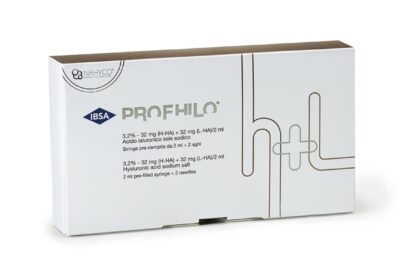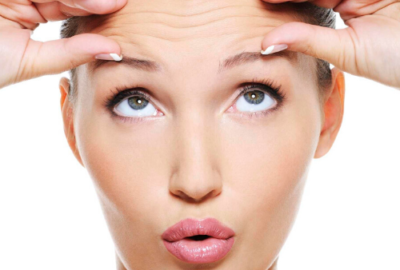What is Acne & how to treat it ?
Acne is the commonest disease of the skin and more than 90% of the population affected by acne at some point in their life.
Acne is a skin condition that consists of blocked pores (comedones), papules, pustules, and cysts. Acne most commonly develops on areas of the body that contain a lot of sebaceous glands (oil) glands like the face, neck, chest, back and shoulders. Acne usually
Acne is caused by 3 main factors:
1. Blockage of pores (medical term is microcomedone) where sebum is produced, by dead skin cells. Dead skin cells normally rise to the surface of pores to be shed by the body but excess oil can clump together with dead skin cells to create a plug.
2. Overproduction of sebum by the sebaceous glands
3. Proliferation of P. acnes bacteria and consequent inflammation
Two types of acne: non-inflammatory & inflammatory:
1. Non-inflammatory: consists of blackheads & whiteheads (open & closed comedones). They occur when a plug made up of sebum and dead skin cells can be seen inside a follicle (pore) but does not cause inflammation or redness.
2. Inflammatory: consists of blackheads, whiteheads, papules, pustules & cysts. If the BACTERIA that live on the skin (P. acnes) enter the clogged pore, they can multiply quickly causing inflammation. When follicles are blocked by sebum & skin cells, the follicular wall is under pressure. If the pressure is great enough then the follicle wall will break & the contents will spread into the surrounding skin. When your immune system responds to the bacteria and sebum, inflammatory acne occurs. The degree of inflammation determines the size & redness of an acne lesion.
Acne is caused by 3 major factors:
- Blockage of pores by dead skin cells
- overproduction of sebum
- proliferation of P. acnes bacteria and consequent inflammation
Acne Treatment Options – How can acne be improved?
Step 1: Exfoliate to remove cell build-up
Acneic skin is often caused by dead skin cells in the pores that are not shedding properly. It is important to remove cell build-up in the pores to allow treatment products to penetrate and destroy P. acnes bacteria. Salicylic acid and lactic acid are examples of exfoliating ingredients known to improve acne.
AlumierMD Home Care Products:
Retinol Resurfacing Serum 0.25, 0.5 or 1%
AHA Renewal Serum +/or Bright & Clear solution
Step 2: Reduce the amount of acne bacteria (P. acnes)
Choose natural anti-bacterial ingredients like hinokitiol, Canadian Willowherb ™, resveratrol and tea tree oil instead of synthetic antibiotics where resistance is a growing problem.
AlumierMD Home Care Products:
Acne Clarifying Cleanser
Acne Balancing Serum
HydraSmooth
Step 3: Control sebum production
When sebum builds up under the plugged pore/follicle, it causes an inflammatory response. Keeping skin moisturized is an important way to balance sebum production. If skin dries out due to excessive washing or harsh chemicals, it will produce more sebum to compensate. Look for gentle ingredients that help mattify skin and control oil production.
AlumierMD Home Care products:
Matticlear
Acne Clarifying Cleanser
Acne Balancing Serum
HydraSmooth
Step 4: Repair skin texture and tone
Depending on its severity, acne can leave post-inflammatory discoloration and scarring.
Repair skin tone and texture with professional peels alongside smoothing and lightening home care products.
AlumierMD Home Care Products:
EverActive C&E™ + Peptide
EvenTone
Step 5: Protect against inflammation and UV damage
Inflammation is a cause and a result of acne. White blood cells are drawn to acne lesions as an immune
response to P. acnes bacteria, which in turn causes inflammation.
Inflammation in the presence of UV rays leads to hyperpigmentation, and exfoliating products used to treat acne often make skin more sun sensitive.
Some acne medications make the skin more sensitive when exposed to UV rays therefore vital to block.
Direct sun and tanning beds increase the risk of melanoma by 75% therefore not recommended.
It is critical to block UV rays with a broad-spectrum sunscreen that contains ingredients to help calm acne and maintain the skin’s delicate moisture balance. Use anti-inflammatory ingredients like hinokitiol, sea whip
and Canadian Willowherb ™ to reduce inflammation and clear breakouts.
AlumierMD Home Care Products:
Clear Shield Broad Spectrum SPF 42
Sunscreen
Moisture Matte Broad Spectrum SPF 40 Sunscreens
Acne Balancing Serum
Summary of recommended products for acne & order of use:
- Cleanser – Acne clarifying cleanser (AM & PM)
- Exfoliant –
- bright & clear (AM & PM)
- or extra exfoliation can use AHA renewal serum
(only at night)
- Speciality serums – acne balancing serum & retinol resurfacing serum
- Moisturiser – hydrasmooth or hydraclarite
- Sunscreen – clearshield best
Treating acne is a multidimentional task and multiple products are recommended to target the different causes. It is recommended to use the full range of products in order to obtain the best results.



